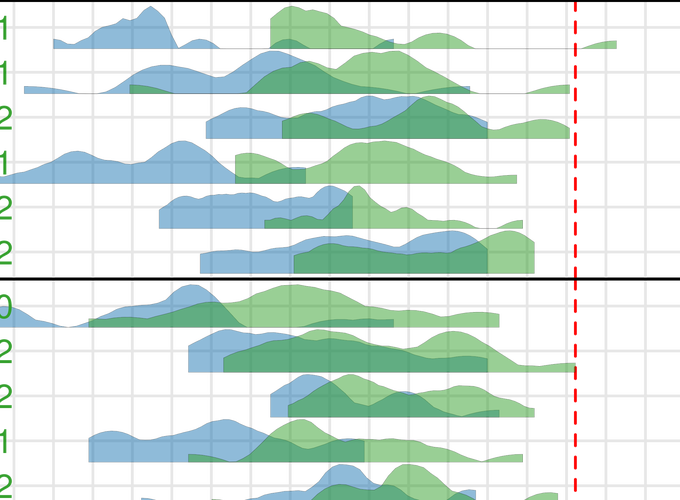Many modeling techniques that appear to be stable with realistic sample sizes in psychology often times make unrealistic assumptions such as multivariate normality or an otherwise correctly specified model. Missing responses are also a common problem in real datasets. Conversely, sometimes researchers employ planned missing data designs to reduce respondent burden, and preemptively reduce the number of careless or random responses. Our research in this area tests and develops methods for analyzing data under such suboptimal conditions. Much of this research is in the realm of multiple regression or structural equation modeling and/or overlaps with that on mediation analysis. Some research deals with small samples and model misspecification in general.
Missing Values, Nonnormality, Messy Data

Missing Values, Nonnormality, Messy Data
Posts
A regularized network model (graphical lasso) with high rates of missing data
Motivation
This post assumes you are interested in doing network modeling and have missing data. To be more specific, suppose you …
Publications
Comparing Factor Score Approaches to SEM in Multigroup Models with Small Samples
Factor Score Regression (FSR) is increasingly employed as an alternative to structural equation modeling (SEM) in small samples. …
Tackling Challenges in Data Pooling: Missing Data Handling in Latent Variable Models with Continuous and Categorical Indicators
Data pooling is a powerful strategy in empirical research. However, combining multiple datasets often results in a large amount of …
Are Robust Standard Errors the Best Approach for Interval Estimation With Nonnormal Data in Structural Equation Modeling?
When the multivariate normality assumption is violated in structural equation modeling, a leading remedy involves estimation via normal …
Investigation of Type I Error Rates of Three Versions of Robust Chi-Square Difference Tests
A Monte Carlo simulation was conducted to investigate the Type I error rates of several versions of chi-square difference tests for …
Robust Two-Stage Approach Outperforms Robust Full Information Maximum Likelihood With Incomplete Nonnormal Data
This article builds on the work of Savalei and Bentler (2009), who proposed and evaluated a statistically justified two-stage (TS) …
Assessing Mediational Models: Testing and Interval Estimation for Indirect Effects
Theoretical models specifying indirect or mediated effects are common in the social sciences. An indirect effect exists when an …